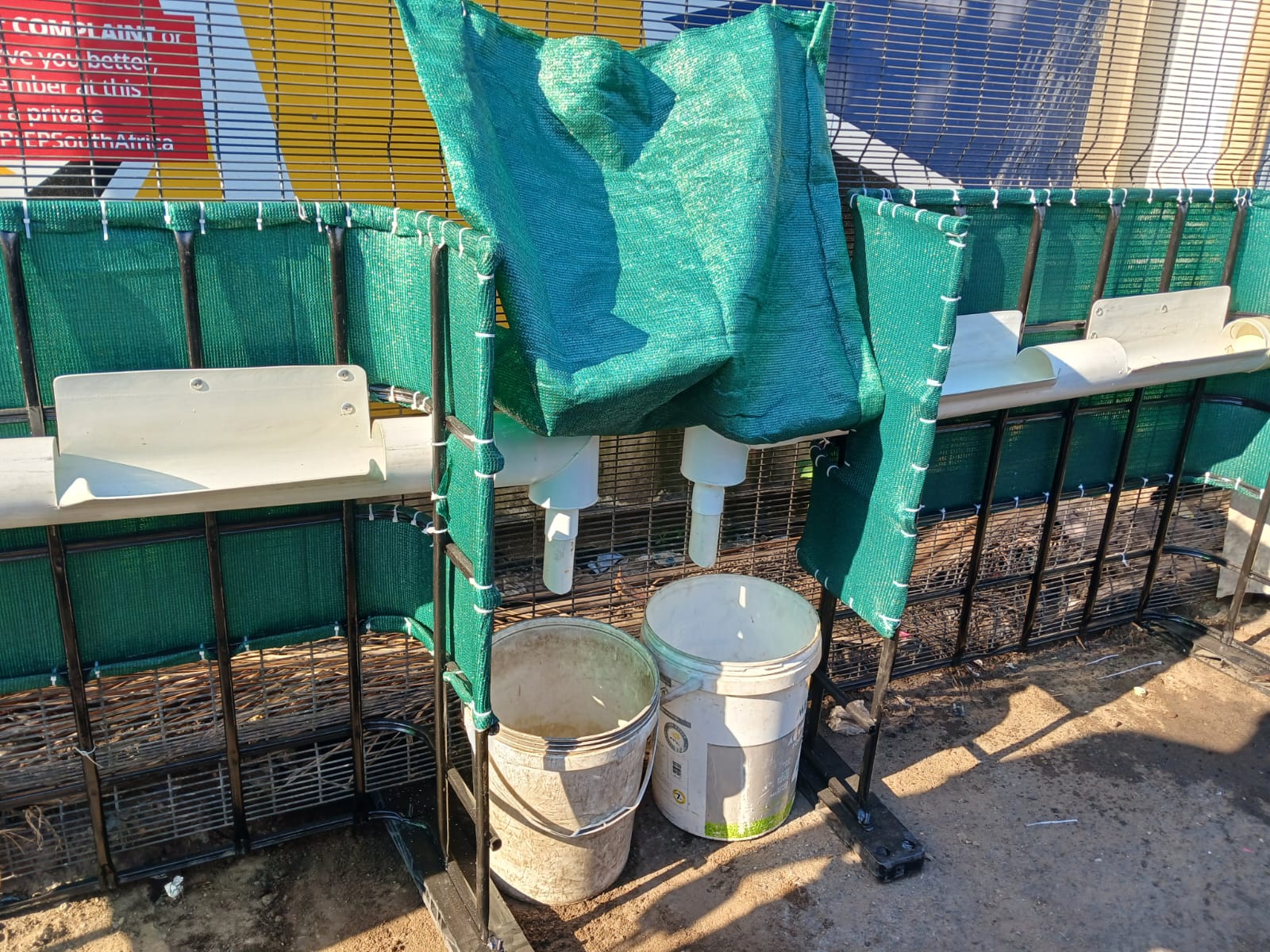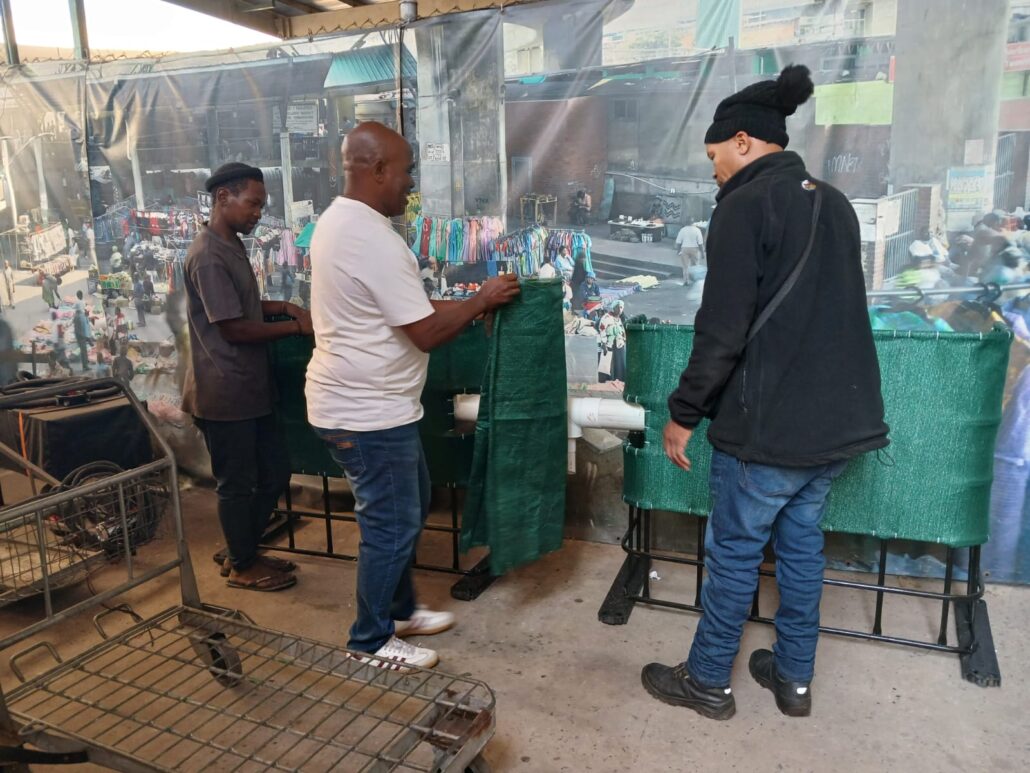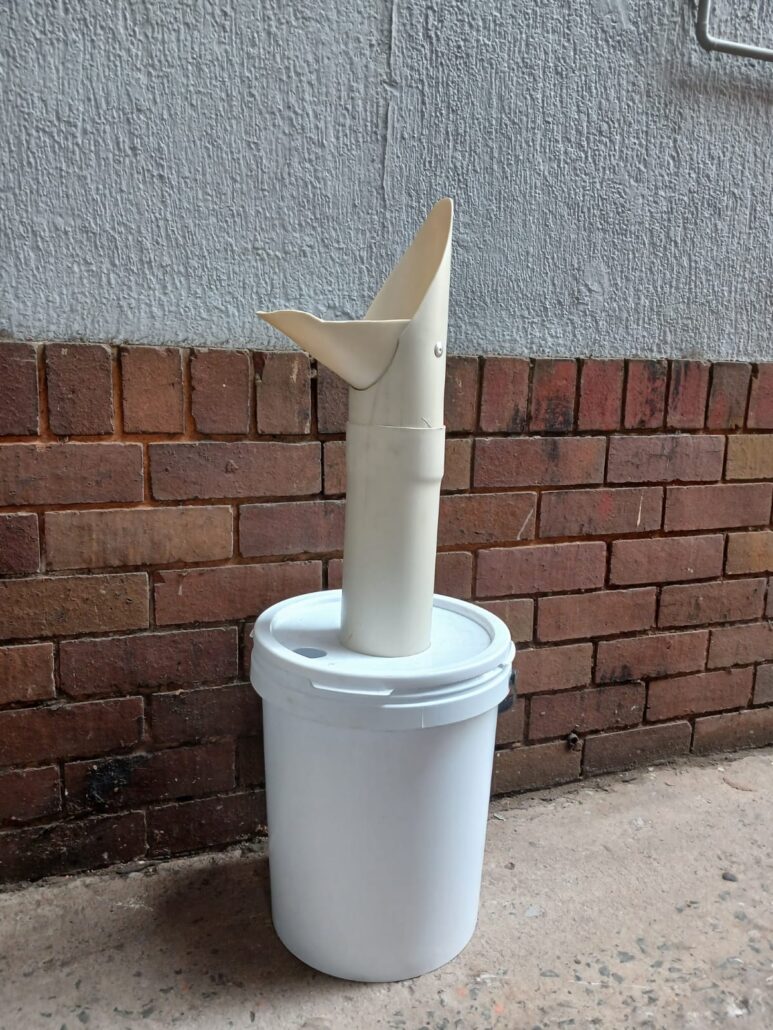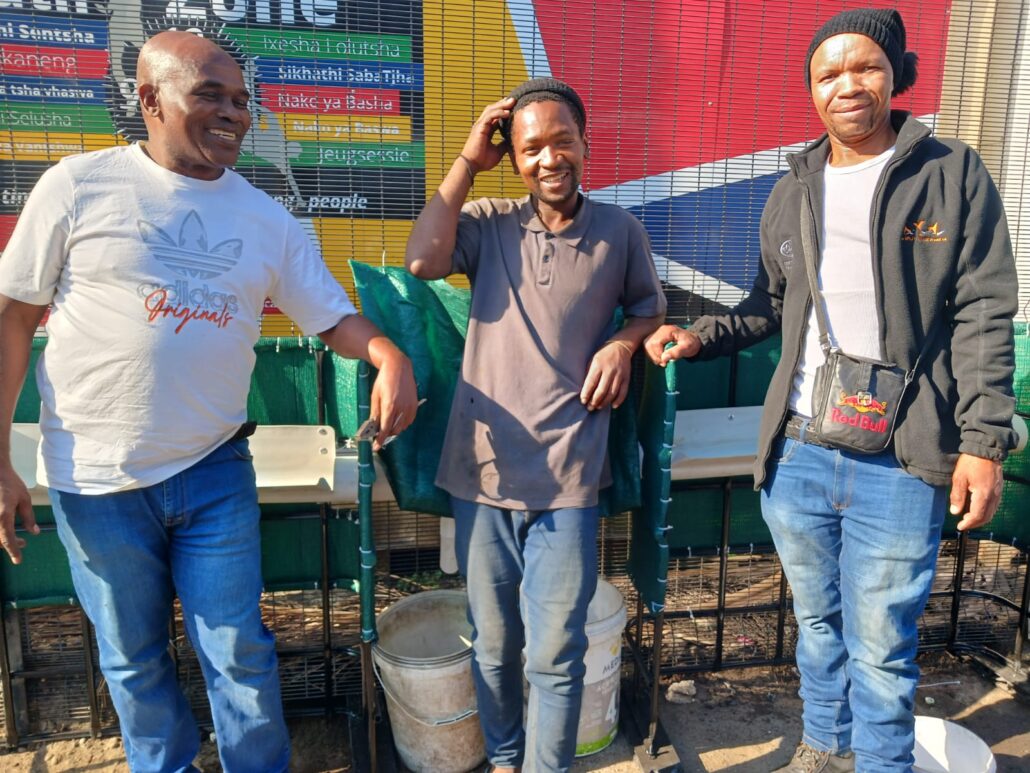In Durban’s inner city, there comes a time when one must hold their nose as they walk past a place covered in a build-up of urine. The ammonia creates a strong smell that most struggle to stomach. As bad as this smell can be, the conditions created from this waste and the reasons behind it are worse.
There are few to no working toilets in Warwick junction. Most have plumbing issues with no running water, are very unsanitary and are completely unfit for human use. Other’s charge a fee that many can’t afford to pay on a regular basis. This leaves many little choice but to urinate on the streets of Warwick. This results in an unsanitary environment that increases risk of disease and makes it generally unpleasant to walk through. This affects foot traffic that informal traders depend on for their businesses. Many also say that the situation makes it hard to conduct their business. There are no viable toilets to show their clients to and the conditions are something that they are ashamed of. The unsanitary environment also creates an image of neglect that goes against many initiatives to improve the reputation of the area.
To combat this, Asiye eTafuleni together with the community of Warwick and Zero Waste champions, have created a system of urine diversion. This process involves working closely with informal workers to identify key areas known to have the most problem with public urination. Pissoirs are made from PVC pipe, recycled metal frames and water-resistant material have been designed and implemented in these areas. The maintenance of these structures on the street are supervised by a member of the Zero Waste Champions, who has been there from the start and various other members of the community- all of whom are responsible for collecting donations from locals to deal with upkeep. This process is constantly evolving, responding to ideas and needs presented by the community.
Input from traders about locations, to even the shape and elements involved in the design, were taken into consideration. Some needed to be U-shaped, others needed to be longer- all responding to the layout of the market and where the structure is needed most. The pissoirs are also stationed in different areas of the market so that traders in each market have access to ablution facilities in walkable distance. The materials the structure is made of are simple enough for locals to be encouraged to experiment with the design. The hope is that eventually when an area is identified to have trouble with public urination, that traders can build their own solution. Another end goal, in line with aspirations about Zero Waste, is to be able to sell the urine to companies interested in harvesting phosphates from the substance. This additional income raises the potential of gaining subsidies to help fund the project.
In a particular location on two bridges, the homeless are using buckets to manage the problem of urination in the space where they sleep and store their things. Buckets are spaced along the bridges to encourage people to use them instead of urinating on the ground. As an alternate design solution, to combat the issues of theft and damage as well bigger structures not being appropriate for the space, Asiye eTafuleni has come up with a more portable pissoir. Made of the same low-cost materials, this design helps to prevent any waste getting onto the floor by employing a funnel design. This solution acknowledges the innovation of the informal workers and their bucket system but attempts to enhance both the hygienic response and its aesthetics. It’s currently still in the design process, receiving opinions from locals and being tested.
This project has helped to encourage the idea of public pride in Warwick. Many traders are more confident in their environment with the implementation of these pissoirs. It’s led to less waste on the streets of the market and in turn a cleaner space for the people who live and work there.








